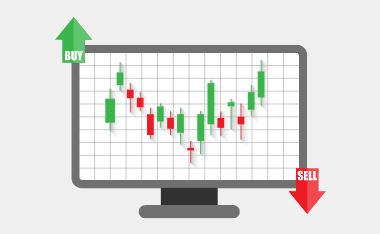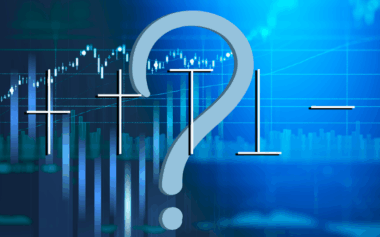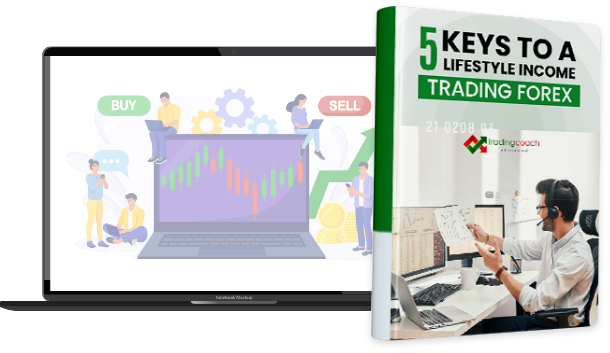Navigating the Forex Market: Challenges and Lessons from August 2023 to June 2024

The forex market from August 2023 to June 2024 was a period marked by considerable uncertainty and volatility.
Financial institutions, grappling with ongoing economic and geopolitical uncertainties, adopted a cautious stance, leading to greater indecision in the market.
This environment made it particularly difficult for most retail forex traders, even those following robust trading strategies, to secure a high level of profitable trades.
While the opportunities for high returns were scarcer, the real winners during this time were the retail traders who adhered strictly to their trading rules and focused on capital preservation.
This period serves as a reminder that in the long journey of trading, periods of market turmoil are not only expected but are also crucial for testing a trader’s resilience and discipline.
These Market conditions “sort the wheat from the chaff” where the traders who try to earn quick profits, without the consideration of capital preservation have the potential to be scattered to the wind and those who have a long-term sustainable approach to their trading keep “in the game” long enough to trade in better conditions.
Market Volatility and Economic Uncertainty
The period from August 2023 to June 2024 was characterized by heightened volatility across global markets.
Several macroeconomic factors combined to create an environment of uncertainty that influenced the forex market, causing dramatic shifts in currency prices.
Global Economic Factors:
The global economy was on shaky ground during this period.
Inflation remained a persistent issue, especially in the United States, where the Federal Reserve continued its policy of interest rate hikes to control rising prices.
However, this approach led to fluctuating levels of investor confidence, with the U.S. dollar experiencing periods of both strength and weakness.
In Europe, economic stagnation and concerns over debt sustainability in southern European nations further contributed to market instability, affecting the euro and other related currencies (Forex).
Geopolitical Tensions:
Geopolitical factors also played a significant role in market movements.
Tensions in Eastern Europe, particularly around the ongoing conflict in Ukraine, had a direct impact on currency markets, with the euro and the Russian Ruble experiencing notable volatility.
In the Asia-Pacific region, trade disputes and military posturing added another layer of uncertainty.
These geopolitical risks led to flight-to-safety behaviours among investors, with safe-haven currencies like the U.S. dollar and Japanese yen experiencing rapid appreciation during moments of heightened tension (DailyFX).
Cautious Stance of Financial Institutions:
Financial institutions, recognizing the uncertainty and potential risks, adopted a cautious approach during this period.
Banks and large trading firms reduced their exposure to volatile currency pairs, preferring to hold onto capital rather than engage in speculative trading.
This cautious stance contributed to lower liquidity in the market, which in turn led to greater price swings and increased the difficulty for retail traders to predict market movements.
The lack of strong directional trends meant that even experienced traders struggled to find profitable opportunities, with many forced to sit on the sidelines and wait for clearer market signals (Forex).
The Impact on Retail Forex Traders
Retail forex traders, who often rely on short-term market movements to generate profits, faced significant challenges during this period.
The combination of high volatility, cautious institutional behaviour, and unpredictable market trends created an environment where traditional trading strategies were less effective.
High Leverage and Risk Exposure:
Retail traders typically use leverage to amplify their positions, which can lead to substantial profits in stable markets but also exposes them to significant risks during volatile periods.
The rapid and unpredictable price movements during this time resulted in numerous margin calls and forced liquidations.
Data suggests that a large percentage of retail traders—potentially as high as 70-80%—experienced losses during these months.
Many traders found themselves on the wrong side of trades, particularly in currency pairs involving the U.S. dollar, euro, and yen, which saw dramatic swings (BestBrokers).
Those who survived this period focused on smaller individual profits off fewer high probability trade opportunities.
Inconsistent Market Trends:
One of the most challenging aspects of this period was the inconsistency and frequent sideways channelling of market trends during the period.
Traditional technical analysis tools, such as moving averages and support/resistance levels, were frequently breached as market conditions shifted rapidly.
This made it difficult for traders to rely on these indicators to make informed decisions.
Prolonged price sideways channels, punctuated with false breakouts, trend reversals, and sudden spikes in volatility were common, leading to losses for traders who entered positions based on outdated or overly optimistic assumptions about market direction.
Psychological Pressure:
The psychological toll on traders during this period was significant.
The stress of managing positions in such an unpredictable market environment led many traders to make impulsive decisions, often resulting in greater losses.
Traders who lacked emotional discipline found themselves caught in a cycle of reactive trading, which compounded their difficulties.
The uncertainty and inconsistency in the market eroded the confidence of many retail traders, making it harder for them to stick to their trading plans and maintain a long-term perspective (DailyFX).
Lessons Learned
Capital Preservation as a Priority:
In periods of extreme market volatility, capital preservation becomes the most crucial consideration for traders.
The primary goal during such turbulent times should not be to chase high returns but to protect trading capital from significant losses.
This approach involves adopting a conservative trading strategy, reducing position sizes, and avoiding overly risky trades.
By focusing on preserving capital, traders ensure that they remain in the market long enough to take advantage of more favourable conditions when they arise.
Capital preservation also allows traders to avoid the psychological stress associated with large drawdowns, which can lead to panic-driven decisions and further losses.
Ultimately, a trader’s ability to protect their capital during challenging periods determines their long-term success in the forex market.
Risk Management:
Effective risk management is essential for navigating volatile markets.
This includes setting strict stop-loss orders to limit potential losses, using lower leverage to reduce risk exposure, and diversifying trading positions to spread risk across multiple currency pairs.
Traders who implemented strong risk management practices were better equipped to weather the market’s sharp movements and protect their capital.
Those who failed to manage their risk effectively often found themselves facing significant losses, which could have been mitigated with more disciplined risk management (BestBrokers).
Adaptability in Trading Strategies:
The ability to adapt to changing market conditions is another key lesson from this period.
Traders who were flexible in their approach, such as shifting from trend-following to range-bound strategies or reducing their trading frequency, fared better than those who rigidly adhered to a single method.
In times of market uncertainty, it is crucial to remain open to adjusting strategies based on the current environment, rather than relying on past patterns that may no longer be relevant.
This adaptability allows traders to navigate through volatile periods more effectively and helps them capitalize on opportunities that may arise (DailyFX).
Emotional Discipline:
Maintaining emotional discipline is critical, especially in volatile markets.
Traders who kept their emotions in check and avoided making impulsive decisions were less likely to suffer significant losses.
Emotional discipline involves sticking to a well-defined trading plan, avoiding the temptation to overtrade in response to market movements, and maintaining a long-term perspective even when short-term results are disappointing.
By staying focused and disciplined, traders can avoid the common pitfalls of panic-driven trading and improve their overall performance.
Long-Term Perspective:
Finally, the importance of maintaining a long-term perspective cannot be overstated.
While the period from August 2023 to June 2024 was challenging, it was also a reminder that the forex market is inherently cyclical.
Traders who focus on long-term profitability understand that periods of market turmoil are a normal part of the trading journey.
Rather than getting discouraged by short-term losses, successful traders use these experiences to refine their strategies, improve their risk management, and prepare for future opportunities.
By maintaining a long-term perspective, traders can navigate through difficult periods with greater resilience and ultimately achieve sustained success in the forex market (Forex).
Notable Events During the Period
Several key events during this time serve as examples of the challenges faced by retail traders:
Yen Flash Crash (October 2023):
In October 2023, the Japanese yen experienced a flash crash against the U.S. dollar following unexpected remarks by the Bank of Japan.
This sudden depreciation caught many traders by surprise, leading to widespread losses for those holding yen positions.
The event underscored the importance of being prepared for sudden market shifts and having risk management strategies in place to mitigate potential losses.
Eurozone Debt Concerns (February 2024):
Renewed concerns about debt levels in Southern European countries in February 2024 led to significant volatility in the euro.
Retail traders who had planned on a euro recovery were blindsided by the sharp downturn, resulting in substantial losses.
This event highlighted the risks of trading based on assumptions rather than concrete data and the importance of staying informed about global economic developments.
US Dollar Strengthening (April 2024):
The U.S. dollar saw a surprising surge in April 2024 after strong employment data and hawkish comments from the Federal Reserve.
Many traders, who had positioned themselves for a weakening dollar, found themselves on the wrong side of the trade, leading to considerable losses.
This event emphasised the importance of remaining adaptable in trading strategies and being prepared for unexpected market shifts.
The Impact on New Traders and the Value of Mentorship
For new traders who had not experienced such volatile and uncertain market conditions before, the period from August 2023 to June 2024 was particularly challenging.
These traders, often lacking the experience to navigate extreme market swings, were more vulnerable to the psychological pressures and risks inherent in trading.
Many of them entered the market with strategies that may have worked in more stable environments but found themselves unprepared for the rapid changes and increased indecision that characterized this period.
The steep learning curve led to significant losses for many, as they struggled to adapt to the realities of a market where profitable opportunities were scarce and risks were amplified.
In such challenging times, the guidance of a trading mentor who emphasizes capital preservation and sustainable profit can be invaluable.
A mentor can provide the necessary support to help new traders avoid common pitfalls, such as overtrading, chasing losses, or abandoning a sound trading plan in the heat of the moment.
By teaching the importance of protecting capital first and foremost, a mentor can help new traders develop the discipline and patience needed to survive and eventually thrive in the forex market.
This focus on capital preservation ensures that traders maintain their positions during tough times, allowing them to capitalize on opportunities when market conditions improve.
Moreover, a mentor can instil the importance of having a long-term perspective, which is crucial for new traders who might be tempted by the allure of quick profits.
By learning from someone who has weathered similar market conditions, new traders can gain the confidence and skills necessary to develop a sustainable trading strategy that will serve them well in all market environments, not just during periods of stability.
The mentorship experience can be a turning point, transforming a difficult learning phase into a foundation for future success.
The Challenging Times in Perspective.
The forex market from August 2023 to June 2024 was a period of significant challenge for retail traders.
The combination of economic uncertainty, geopolitical tensions, and the cautious stance of financial institutions created an environment where traditional trading strategies were less effective, and profitable opportunities were scarce.
However, this period also offered valuable lessons for traders who were willing to adapt, focus on capital preservation, and maintain a long-term perspective.
In the end, the traders who emerged as winners during this period were those who adhered strictly to their trading rules, managed their risk effectively, and remained disciplined in the face of market volatility.
By learning from these experiences, traders can better navigate future periods of uncertainty and continue on the path to long-term profitability in the forex market.
Disclaimer
Disclaimer
The information in this article is intended to be general information in nature and is NOT general financial product advice, nor personal financial product advice.
It does not take into account your objectives, financial situation, or needs.
Past performance is not necessarily indicative of future performance.
Any results on our website, including this page, are illustrative of concepts only and should not be considered average results, or promises for actual or future performance.
The Trading Coach International does not operate under an Australian Financial Services Licence (AFSL), as the services we provide do not require one.
Speak with your registered financial advisor before making any financial decisions.


















